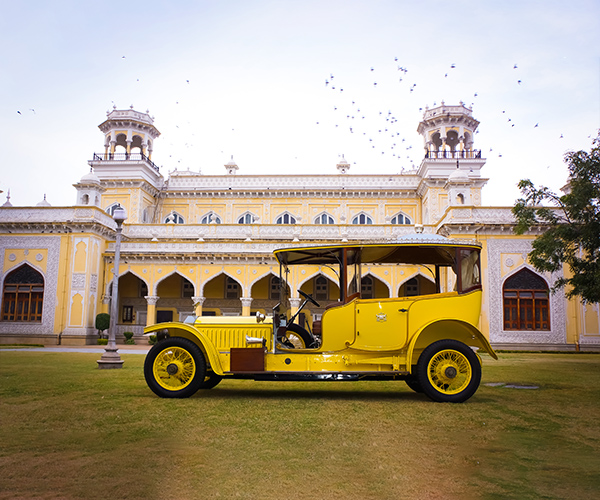
Wisdom And Strength And Patience Gone, And Life In Jeopardy,
O Heart, What Canst Thou Reckon On And Who Will Stand By Thee?
Standing in support of the magnificent Khilwat Mubarak and the efficient & grand Chau Mahal Complex are an array of other buildings, the constructions and renovations of which started during the creation of the new Khilwat.
The structures are Roshan Bangla, Saman Bangla, Council Hall, Bara Imam and Shishe Alat.
The Roshan Bangla is situated on the left of Khilwat. Legend has it that the Sixth Nizam was born in the previous structure on the plot, and after his birth, the palace was built and named after his mother, Roshan Begum.
Symmetrically opposite to the Roshan Bangla, on the right side of Khilwat, is the Council Hall.
A visitor to Chowmahalla naturally gravitates to the cistern in the middle of the compound. A line of structures stand symmetrically opposite to the cistern, with open Mughal-style verandahs in front. The Bara Imam, the administrative wing, sits on the right side of Khilwat, opposing the Shishe-Alat, the guest rooms. The architecture of these two structures are inspired by the Mughal era, with Indo-Saracenic arches and predominated turrets.
The Saman Bangla rests behind the Bara Imam, while further behind are the royal Ashurkhanas.
These structures were used as women’s quarters, living quarters and administrative blocks.
In addition to these buildings, a striking feature of the Chowmahalla Palace is the Clock Tower. The North Gate holds a clock tower in a structure with balconies & windows inspired by the Mughal styles. To the left of the North Gate are a bath and a well.
Facing Khilwat and North Gate are some cannons placed on the four corners of the lawn. These magnificent cannons are dated 1203/1789-90, and have the inscription of Asaf Jah II reading “Sarkar Nizam Ali Khan”.